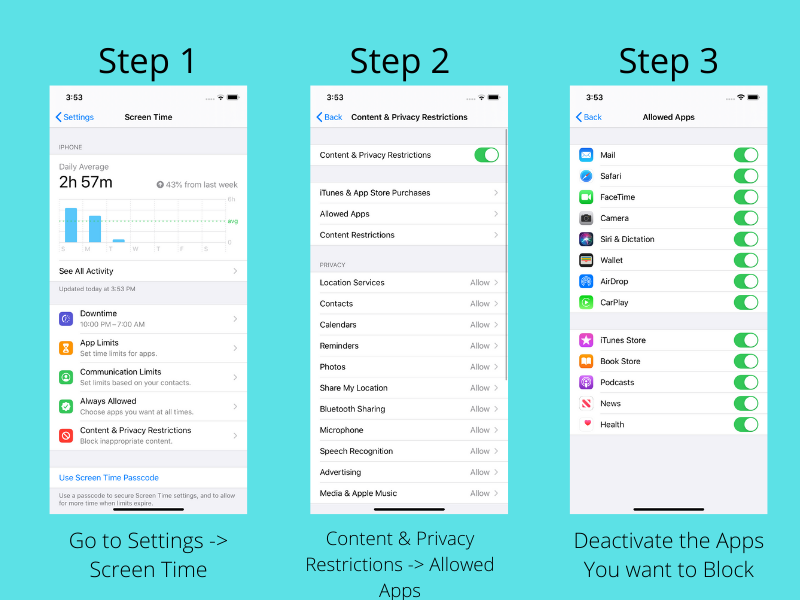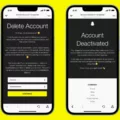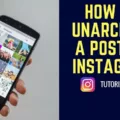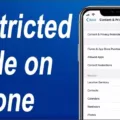When it coes to staying connected, the iPhone is one of the most popular devices on the market. With so many features, apps and tools available, this device can help you stay connected with family and friends, work tasks and hobbies. However, with all of these features come potential risks. An important bit of knowledge to have is how to block an app on your iPhone.
The first step when blocking an app is to find the settings page for your device. To do this, open your Settings app and scroll down until you find the Restrictions option at the bottom of the list. Tap this option and enter a passcode if prompted. This passcode will be used every time you want to make changes in Restrictions mode.
Once in Restrictions mode, scroll down until you see “Allow” and tap it. This will bring up a list of all apps installed on your phone that can be blocked from use or allowed for use by anyone using your phone. Scroll though this list until you find the app that you wish to block from use. Once located, simply tap on its name to toggle it off (the toggle should be grayed out).
If you ever want to unblock an app that has been previously blocked, simply follow these same steps but toggle the off switch back on (it should be green). Please note that any changes made here will apply not just to yoursef but also any other users who have access to your phone or its data – make sure everyone in your household is aware of any restrictions you might have them in place!
By following these simple steps, you can easily block any app from being used by anyone using your iPhone or iPad – making sure that only tose with permission are able to access those features!

Blocking a Specific App
First, open the Google Play Store and select your profile icon in the top-right corner. Then, tap on Settings and scroll down to the User controls section. Tap on Parental controls to enable it, then create a PIN and confirm it. Finally, under the Parental Controls menu you’ll be able to customize restrictions for specific apps by selecting them from the list of installed apps. You can also block an app from being installed by deselecting it from the Apps & Games section.
Disabling a Specific App on an iPhone
To disable a specific app on your iPhone, you will need to access the Screen Time settings. First, open Settings from your Home screen. Then select Screen Time and tap Content & Privacy Restrictions. You will be prompted to enter a four-digit passcode and then confirm it. Once the restrictions are enabled, you can tap the switch next to Content & Privacy and then select Allowed apps. Finally, you can toggle the switch next to the app(s) you wish to disable.
Permanently Blocking an App on a Phone
To permanently block an app on your phone, you’ll first need to open the Freedom app. On the main screen of the app, tap the Gear icon in the top-right corner and then select “Manage Blocked Applications”. On this screen, you’ll see a list of your device’s apps divided by category. From here, you can select the apps you wish to block and then tap “Block App Permanently” at the bottom of the screen. Once you’ve done this, Freedom will remember that you’ve blocked this app and it won’t be available for use durng any session, regardless of whether or not you’re connected to Freedom.
Blocking TikTok on a Child’s Phone
To block TikTok on your child’s phone, open the Bark app, tap the Start Session tab, and then click Blocklists. Next, tap Block Android Apps. From here, you can choose to start your block session now by tapping Start Now and then selecting the Block Android Apps blocklist. You can then select the devices you want to include in the block session and set when your session ends. Finally, be sure to check the box next to TikTok beore starting your session to ensure it is blocked on your child’s device.
Blocking Content on an iPhone
To block content on your iPhone, start by launching the Settings app from your Home screen. Then, select Screen Time. Enter a passcode when prompted to do so and turn on the Content & Privacy Restrictions toggle switch. After that, select Content Restrictions and choose the type of content you’d like to block. You can choose from web content, location services, purchases and downloads, accounts, contact restrictions and more. If you want to block adult websites specifically, tap Web Content and select Limit Adult Websites. Finally, set up a passcode for additional security if desired. Once you’ve blocked the content you want to restrict access to, it will no longer be available on your device.
Disabling an App Without Deleting It
To disable an app without deleting it, you can mark it as “inactive”. To do this, click on the ADVANCED button on the riht of your app and select the Inactive option from the status drop-down list. Once you have done this, click Save to make the app unavailable for field users. Note that making an app inactive does not delete any of its data or settings.
Blocking Snapchat on a Child’s iPhone
To block Snapchat on your child’s iPhone, you can enable the App Limits option on the Screen Time section of the Settings app. This will allow you to set limits on how much time they can spend using individual apps, such as Snapchat. You can also select specific content or ratings that you don’t want them to have access to. If your child tries to use an app or content that is aboe their age limit, they will receive a notification and won’t be able to use it until you change the settings.
Blocking Instagram on iPhone
To block Instagram on your iPhone, you will need to frst download the Freedom app from the App Store. Once downloaded and opened, log in and tap Blocklists in the bottom menu, then select Add a Blocklist. Give your new blocklist a name and scroll down to select Instagram. Then, confirm that you want to add it to your blocklist. Once done, Instagram will be blocked on your device.
Blocking Apps Permanently on an iPhone
Yes, you can permanently block an app on iPhone. In order to do this, access the Restrictions menu in the Settings app and select ‘Apps’. Here you will find options to block access to certain types of apps and content. Additionally, you can also choose to block all app and Apple Music purchases, as well as prevent people from installing or deleting apps. Once these settings are enabled, the app in question will be blocked from being used or installed on your device.
Blocking an App Permanently
To block an app forever on your devices, you will need to use the Blocklist App feature in the Inventory section. First, navigate to the Inventory tab and click on Apps. You will be presented with a list of all the available apps. Select the app that you would like to block and click on Blocklist App. Then, select whether you want to block the app from being downloaded on all devices or just specific ones. Once you have selected this option, the app will be blocked forever and no longer be able to be downloaded on those devices.
Restricting Apps on Kids’ iPhones
To restrict apps on your kid’s iPhone, you’ll need to set up content and privacy restrictions using Screen Time. You can do this by opening the Settings app on your iPhone or iPad and tapping Screen Time. Then, tap Turn On Screen Time, read a summary of what the feature can offer, and tap Continue. After selecting This is My Child’s iPhone if you’re setting up parental controls, you’ll be able to customize settings for specific apps, such as setting time limits or blocking certain types of content. You can also disable in-app purchases and prevent canges to privacy settings.
Monitoring a Child’s iPhone Text Messages
If you want to monitor your child’s iPhone text messages, you can use Apple’s cloud message sync feature. This feature is available on iOS 12 or later versions and allows you to access all data from your child’s device. First, enable iCloud syncing on both your device and your child’s device. Once enabled, make sure to enable message syncing as well so that you can read messages from your child’s phone.
Blocking YouTube on an iPhone
To block YouTube on your iPhone, you will first need to enable Restrictions in your device settings. To do this, go to “Settings” > “General” > “Restrictions” and toggle the switch to the On position. Once enabled, you will be asked to enter a 4-digit passcode twice. After this is done, scroll down and tap on “Websites”. Here you will find the option to “Limit Adult Content”. Tap this and then tap “Add a Website” in the NEVER ALLOW section. Type in “youtube.com” and YouTube will now be blocked on your device.
Blocking a Specific Website on an iPhone
Yes, you can block a specific website on your iPhone. To do this, go to the “Content Restriction” section of Screen Time. From here, select “Websites” and choose the option to “Limit Adult Websites”. This will open up a list of pre-approved websites that you can allw access to. If the website you want to block is not on this list, tap “Add a Website” and enter the URL for the website that you want to block. Once you have added the website, tap “Done” and it will be blocked from your device. You can also add passcode protection for these settings so that others cannot change them without your permission.
Blocking Apps on a Child’s Phone
Yes, you can block apps on your child’s phone. To do this, open the Google Play Store app on your child’s phone and select the “Content restrictions” option. From there, you can choose the highest maturity level of content you want to allow for download or purchase. You can also add specific apps to a blocked list, if desired. Additionally, you can restrict access to other types of content such as movies and TV shows.
Monitoring a Child’s Snapchat Activity
The best way to see what your child is doing on Snapchat is to take regular screenshots of the app. Parents can use the built-in screenshot capture function to remotely take screenshots of the app at any time. This feature allos parents to monitor their kid’s activities on Snapchat and make sure they are staying safe online.
Limiting Text Messages on an iPhone for Children
Yes, you can limit who your child can text on iPhone. To do this, fist turn on Screen Time and select the option that says ‘This is My Child’s iPhone’. Then, go to Communication Limits and you can choose to limit communication at any time. You can choose from Contacts Only, Contacts & Groups with at Least One Contact, or Everyone. This will allow you to control who your child can communicate with via text messages.
Blocking Facebook App on an iPhone
To block the Facebook app on your iPhone, you’ll need to install the Freedom app. Once installed, launch the Freedom app and log in with your account. You can then add Facebook to your blocklist and start the blocking process. The Freedom app allows you to block specific sites or apps, such as Facebook, for a set amount of time so you can stay focused and productive. Additionally, you can sync this blocking across all of your devices that use the same Apple ID, allowing for a consistent experience.
Blocking Instagram on a Child’s Phone
To block Instagram on your child’s phone, you will need to use a parental control app. Using a parental control app such as Mobile Guardian alows you to easily block the Instagram app from your child’s phone. To do this, simply open the Mobile Guardian dashboard, go to Application Security Settings, view all the apps installed on the phone or device and select Instagram. You can then choose to either block or allow access to the app. By blocking access, your child will not be able to open and use the Instagram app on their device.
Blocking Instagram App
To block the Instagram app on your device, open the Settings app and scroll down to the list of apps. Find the Instagram app and select it. In the app’s settings menu, toggle the ‘Block’ switch to the on position. This will prevent you from uing or seeing any content posted by that user in your feed.
Blocking an App From Opening
Yes, AppBlock allows you to block any app from opening temporarily. With the application, you can select the specific apps you want to block, set a time limit for when they should be blocked, and even choose where they should be blocked. You can also customize a range of options such as allowing notifications wile blocking the app or dismissing notifications when it is blocked. This makes AppBlock an effective tool for managing distractions and staying focused on what matters.
Removing Permissions When Uninstalling an App
Yes, uninstalling an app does remove its permissions. When an app is uninstalled, it can no longer access any of the device’s local resources such as sensors, storage and data. Additionally, it cannot send notifications or track your activity. Once an app is uninstalled, it’s gone for good and its permissions are no longer valid.
What Is the Best App Blocker?
The best app blocker is Freedom, which blocks distractions on all your devices at once. It allows you to customize which apps and websites you want to block and for how long. You can also set a schedule for when the blocked sites will be accessible again. This app is especially useful if you need help staying focused and avoiding distractions throughout the day. Additionally, it has features such as a “Focus Mode” that mutes notifications from certain apps whie allowing you to access the apps that you need to complete your work. Freedom also has an optional “Panic Button” feature which instantly blocks all distracting websites and apps with one click.
The Use of Parental Controls on iPhones
Yes, iPhone has parental controls. With Family Sharing, the organizer can set up Screen Time on their children’s Apple devices. This feature allows you to control how much time your children spend on their devices and wich apps and features are available to them. You can also set content and privacy restrictions, block websites, manage contacts, and use location services for added security.








